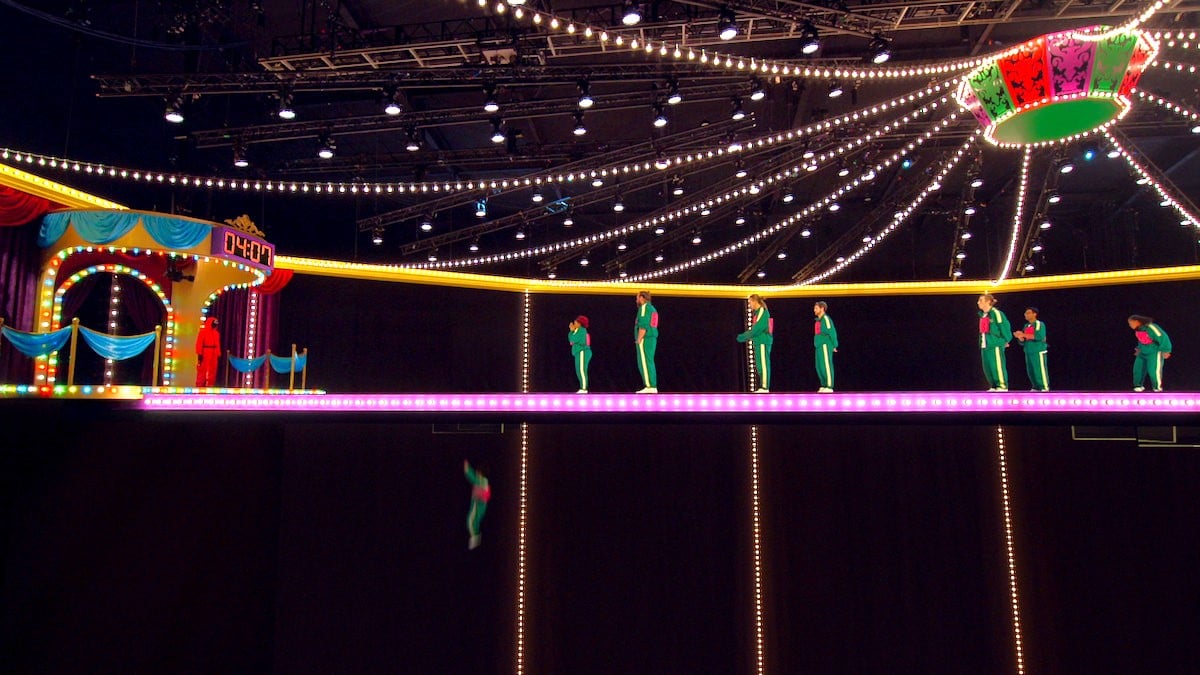Proving the dystopian themes of the original series right, Squid Game: The Challenge is turning out to be just as engrossing to Netflix audiences as the smash-hit K-drama as viewers just can’t look away as contestants put themselves through the wringer in the hopes of becoming a multi-millionaire.
Releasing in three batches, The Challenge dropped its first five episodes on Nov. 22, 2023 before episodes 6-9 followed on Nov. 29, with a season finale releasing on Dec. 6. Episode 7, “Friend or Foe, is becoming one of the most talked-about installments of the show thanks to the Glass Bridge challenge, bringing to life one of the most memorable and terrifying rounds from the fictional Squid Game.
To remind you, in the drama, players were forced to cross a Glass Bridge made of both regular, unsupported glass and stronger, tempered glass. They had to pick either the left or right square on each turn, with those unlucky enough to make a wrong step plummeting to their deaths. In The Challenge, well, the game visually works pretty much the same way. But, it wasn’t actually as deadly as it appears, right?
How Squid Game: The Challenge recreated the Glass Bridge, explained

If you watched The Challenge episode 7 and feared for the contestants’ safety, don’t worry. On the day of its release, Netflix’s TUDUM website released an interview with the show’s executive producers to lift the lid on how the Glass Bridge sequence was achieved.
First of all, the first change that had to be made to make it safe was that the name is actually a misnomer as the bridge was really made of Perspex, a much tougher acrylic material. “Those doors had to withstand the weight of any contestant who stepped on them, and they needed to be triggered to open when it was safe to do so,” explained EP Toni Ireland.
OK, so the glass was Perspex, but when a player made a wrong move they fell through — we saw that on-screen! Well, we did, but naturally there was some camera and editing trickery achieved here to ramp up the stakes and drama. In reality, the players were told over a loudspeaker when they had stepped on a good square or a bad one. Their immediate reactions were then captured on camera, so that part of the process was 100% genuine.
What would then happen is that the player would stand aside and allow a stunt performer to make the jump for them. In addition, the lengthy fall depicted on screen isn’t exactly the truth of it. The bridge was only about 16 feet high, plus there was a 6-foot-tall airbag waiting to catch the stunt person. In real life, then, the drop was only 10 feet, with the scale of it altered via VFX in post-production.
“The ‘fall’ through the trapdoor was done by a stuntperson,” EP John Hay stated. “That fall takes specialist skills. We took the care and safety of our players incredibly seriously, so we shot as much as we possibly could with them, then, at the very last minute, we swapped them out for the stunt performers. The stuntperson shot and VFX is used for just that fall moment.”
Given that there was no real danger, the team wanted to put the emphasis on the players’ emotions as they won or lost. “The [players’] reactions are all genuine,” Ireland stressed. “Even though there was a little bit more process than what you see on screen, the emotions are still real. They’ve just seen their friend eliminated. They then have a difficult decision to make in order to stay in the game.”
As well as a fascinating insight into how the Glass Bridge round was pulled off, it’s possible these revelations about Squid Game: The Challenge‘s inner workings are an indirect response to a threatened lawsuit from certain contestants over alleged unsafe conditions on the U.K.-filmed reality series. Netflix seems to want us to know the game show is definitely not as fatal as its fictional counterpart.

